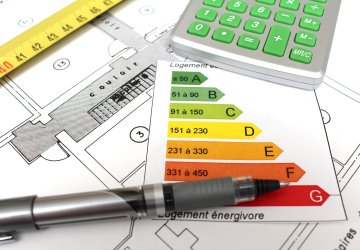You’re sitting at your desk, the clock shows almost three o’clock and you’re tired. The phenomenon of the ‘afternoon dip’ is making its appearance. Perhaps grab another cup of coffee? It doesn’t have to be this way: if the organisation you work for uses the Internet of Things (IoT)Internet of Things (IoT) intelligently, you won’t need an extra shot of caffeine. For instance, by regulating the CO2 level in a building and encouraging flexible working, the facility manager can contribute to a higher energy level among his colleagues.
There’s been a huge amount of hype about IoT in recent years, and that’s understandable. Technology hasn’t always been customer-friendly. If you had the latest technology for instance, it wasn’t always compatible with your old hardware, or it couldn’t be applied in your outdated building. IoT is far more flexible in that respect. The time has come to deploy the countless possibilities IoT offers for things we can benefit from. There are plenty of examples: consider sensors in desks that are in contact with a building’s IoT network, so that employees can see which flexi-places or meeting rooms are available in the office.
Enhance work productivity with simple solutions
It’s certainly useful to know whether a desk is available, but more far-reaching applications are also conceivable. For instance, consider measuring the temperature in a particular department and making this visible to employees. Office climate and temperature are often named as annoying factors. Someone who is quick to feel the cold can decide to work in a warmer department, thanks to IoT technology. This influences an employee’s work productivity.
That brings me to perhaps the most important application in the list: measuring the CO2 level, humidity and quantity of light in a building. Employees assume this is in order, but in many buildings that’s in fact not the case. Do you suffer from fatigue or drowsiness in the afternoons? Perhaps that’s not because of the sandwich you ate at lunch, but more likely the high CO2 level in the office. Not enough attention has been paid to this so far, but by measuring it with sensors and revealing it to the facility manager, he can act upon it. Among the things he can then do is to adjust the ventilation to improve the current CO2 level, or to use or divide up the available space differently. Not every organisation is aware of the problem, but it certainly exists.
Contributing to a healthy organisation
In this context, an IoT system, which brings together data produced by a range of sensors, could also connect other things. For example, if the system sees in your digital diary that you have an appointment while it’s actually sunny outside, then it could suggest a walking route so that your appointment could occur on the move. After all, why do we specifically have to meet in an office or a room? In this way, the system contributes to employees getting enough movement, and their CO2 intake remaining at the right level. This has a positive yield for the organisation, because of course a healthy employee performs better.

